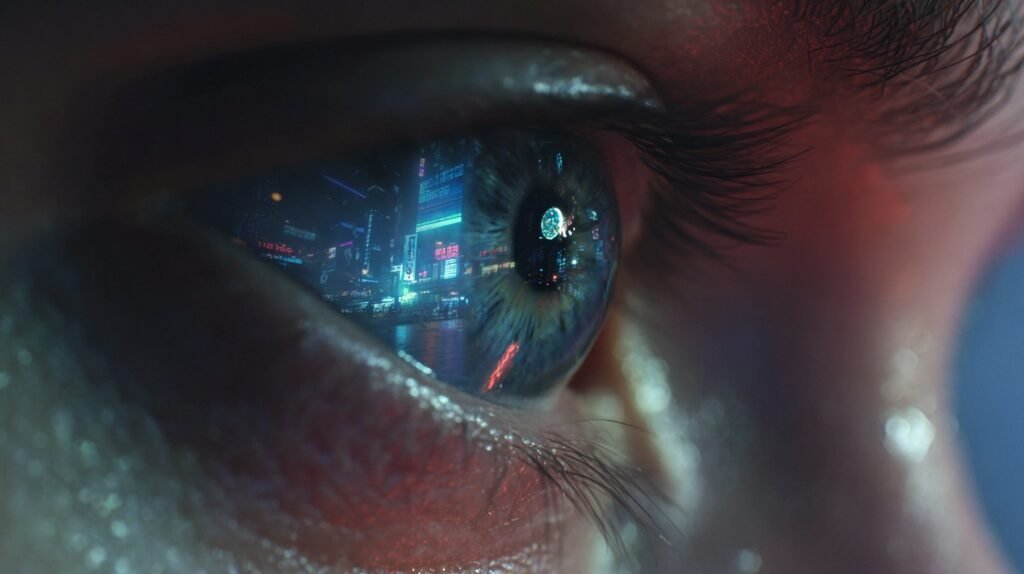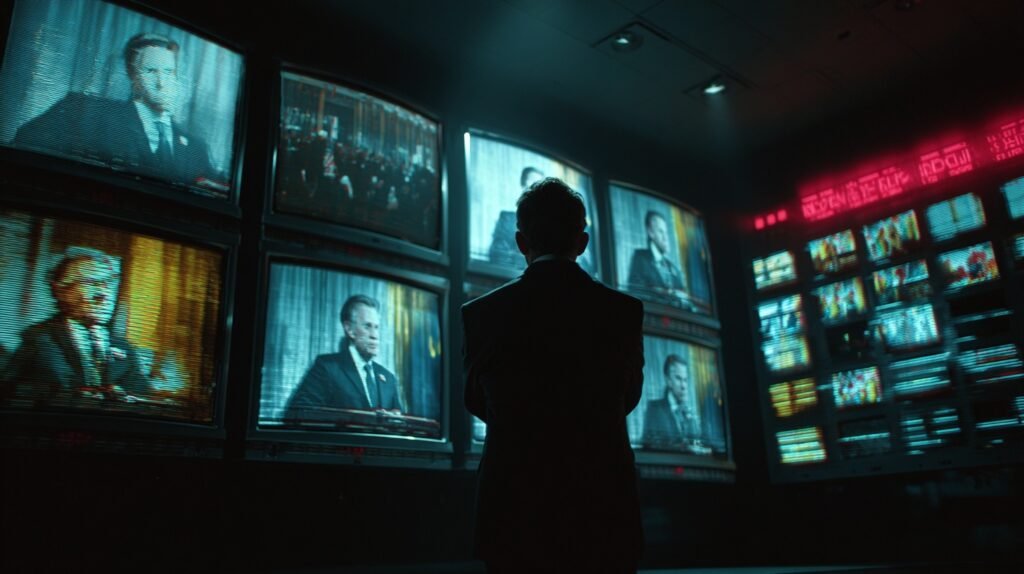
Table of Contents
The core of the OpenAI Sora concerns isn’t whether the technology is impressive; it’s that we’ve just witnessed a tool that could dismantle our shared sense of reality, and we have no idea if we’re prepared for the fallout. There’s a video making the rounds. A woman with stylishly tousled hair walks down a Tokyo street, the city lights reflecting in puddles on the pavement. It’s cinematic, moody, and utterly believable. Except, none of it is real. The woman, the street, and the puddles are all phantoms conjured from a simple text prompt by OpenAI’s new video generator, Sora. My first reaction was a genuine, audible “wow.” My second was a knot forming in my stomach.
This isn’t just another incremental step in generative AI. This is a leap across the uncanny valley. While previous AI video models produced clips that were often wobbly and strange, Sora generates fluid, high-definition video up to a minute long that can be indistinguishable from camera footage. It understands, to a degree, the physics of our world. It can render complex scenes with multiple characters, specific types of motion, and even subtle lighting changes that mimic real-world cinematography. This monumental achievement in artificial intelligence also throws open a Pandora’s box of ethical dilemmas. The most pressing OpenAI Sora concerns center on AI deepfake technology and the potential for a tsunami of misinformation.
The Coming Storm of Perfect Fakes
The fear of deepfakes is not new, but the scale and accessibility that Sora promises are. What Sora changes is the barrier to entry, democratizing the ability to create hyper-realistic fake video and turning a niche threat into a potential societal crisis. The most obvious and immediate danger lies in the political arena. Imagine a flawlessly rendered video of a presidential candidate admitting to a crime, released just hours before an election. The clarification, when it eventually comes, may not have the same visceral impact as the initial lie. This potential for political weaponization is one of the most significant OpenAI Sora concerns.
As a recent report from The New York Times highlighted, the speed at which such content can be created and disseminated far outpaces our current capacity for verification. We are building a world where seeing is no longer believing. This erosion of trust extends beyond politics. Think of personalized scams: a video of a loved one in distress asking for money, or a fabricated celebrity endorsement for a fraudulent investment scheme. When the evidence of our own eyes can be so easily fabricated, the very foundation of trust begins to crumble.
The implications ripple outward in ways we’re only beginning to understand. Journalists rely on video evidence to document war crimes, police brutality, and environmental disasters. What happens when authoritarian regimes can credibly claim that damning footage is AI-generated? What happens when insurance companies can’t trust dashcam footage, or when courtrooms must question every piece of video evidence? The legal system, already slow to adapt to digital realities, will face an existential challenge in determining what constitutes proof.
A Glimpse From My Side of the Screen
I spend my days helping people build websites and create content, often using AI tools to streamline the process. I’ve always been an optimist about technology. I’ve seen how the right tools can empower small businesses, amplify marginalized voices, and democratize access to creative expression. But watching the Sora demos, I felt a profound shift. The line between tool and reality-generator blurred in a way that felt fundamentally different from anything I’d experienced before.
I imagined the incredible creative possibilities: independent filmmakers bringing their visions to life without a Hollywood budget, educators creating immersive historical simulations that could transport students to ancient Rome or the surface of Mars, artists exploring entirely new forms of visual storytelling. A friend of mine, a documentary filmmaker, has been trying to secure funding for a project about climate refugees for three years. With Sora, she could create compelling visual narratives that might finally get her story told. It’s genuinely exciting.
But the apprehension is just as real, and it sits heavier on my chest. The skills I teach in content creation and digital literacy are based on an assumption that video evidence carries significant weight, that there’s a meaningful difference between what’s real and what’s fabricated. Sora and tools like it are poised to shatter that assumption. It forces us to confront difficult questions about digital literacy that go far beyond “don’t click suspicious links.” These foundational OpenAI Sora concerns are not just for security experts to solve; they affect every one of us who consumes or creates content online.
Can We Even Build Guardrails for a Rocket Ship?
OpenAI is, of course, aware of these dangers. The company has stated it is engaging with policymakers, educators, and artists to understand the concerns and is developing tools to help detect AI-generated content. They’ve mentioned plans for “provenance classifiers” that can identify Sora-generated videos and a commitment to not releasing the tool publicly until significant safeguards are in place. These are necessary steps, but they feel like building a fence after the horses have learned to fly. Addressing the technical side of the OpenAI Sora concerns is only part of the solution.
The challenge is that technology always outpaces regulation. By the time lawmakers understand the implications of one innovation, three more have already been released. Watermarking and detection tools can be circumvented by determined actors with even modest technical skills. The very nature of social media algorithms, which prioritize engagement over accuracy, means that sensational and false content often spreads faster than the truth. A lie can travel halfway around the world before the truth has finished putting on its shoes, as the saying goes. Now that lie can arrive in high-definition video.
It connects directly to the broader challenges we see across the digital landscape, as discussed in recent social media trends, where the fight for attention often sidelines the fight for accuracy. The conversation we need is not just about detection tools; it’s about fostering a culture of critical thinking on a massive scale. We need media literacy education that starts in elementary school and continues throughout our lives. We need newsrooms with the resources to verify content quickly. We need platforms that prioritize truth over virality.
What Happens When Everyone Can Be Everywhere?

There’s another dimension to the OpenAI Sora concerns that gets less attention but is equally troubling: the question of consent and identity. With Sora’s capabilities, anyone could theoretically place you in a video you never appeared in, saying things you never said, doing things you never did. The technology doesn’t just threaten our collective sense of truth; it threatens individual autonomy and dignity.
We’ve already seen the devastating impact of non-consensual deepfake pornography, which overwhelmingly targets women. Sora’s sophistication could make these attacks even more realistic and harder to disprove. Imagine trying to convince an employer, a partner, or a community that a video of you isn’t real. The burden of proof shifts in uncomfortable ways. You’re suddenly guilty until proven innocent, forced to defend yourself against evidence that never existed.
This isn’t hypothetical fearmongering. It’s already happening with cruder tools. Sora simply makes it easier, faster, and more convincing. The psychological toll on victims is immense, and our legal frameworks are woefully unprepared to address it.
The Democratic Stakes of Synthetic Media
At its core, democracy depends on a shared understanding of reality. We can disagree about policy solutions, but we need to agree on basic facts. What happens when that common ground disappears? When every piece of evidence can be dismissed as fake, and every fabrication can be defended as real? The OpenAI Sora concerns are, in many ways, concerns about the future of democratic governance itself.
Authoritarian regimes have long understood the power of controlling information. But in the past, that control required significant resources and infrastructure. Now, the tools of reality manipulation are becoming democratized in the worst possible way. A single bad actor with a laptop can create chaos. A coordinated disinformation campaign can destabilize an election, incite violence, or undermine public health efforts.
We saw glimpses of this during the COVID-19 pandemic, when misinformation about vaccines and treatments spread faster than the virus itself. We saw it in the lead-up to the 2020 U.S. election, when false claims about voter fraud nearly toppled the peaceful transfer of power. Sora and similar technologies will supercharge these threats.
The question isn’t whether bad actors will use these tools. They will. The question is whether our institutions, our media ecosystems, and our collective critical thinking skills are strong enough to withstand the onslaught. Right now, I’m not sure they are.
A Call to Action, Not Despair
Ultimately, the arrival of Sora is an inflection point. It is a testament to human ingenuity and a stark warning about our own vulnerabilities. The technology itself is a powerful engine that can be used for creation or for chaos. The path we take depends on the choices we make as a society, starting right now.
We can either be passive consumers of an increasingly synthetic reality, scrolling through feeds we can no longer trust, or we can become active, critical participants. We can demand transparency from the platforms that host this content. We can support journalism that prioritizes verification. We can teach our children, and ourselves, to question what we see. We can advocate for regulations that hold bad actors accountable without stifling innovation.
The OpenAI Sora concerns are a call to action for us all. This is not a problem that will be solved by engineers alone, or policymakers alone, or educators alone. It requires all of us to engage, to stay informed, and to fight for a future where technology serves humanity rather than undermining it. The clock is ticking, and the stakes have never been higher.
